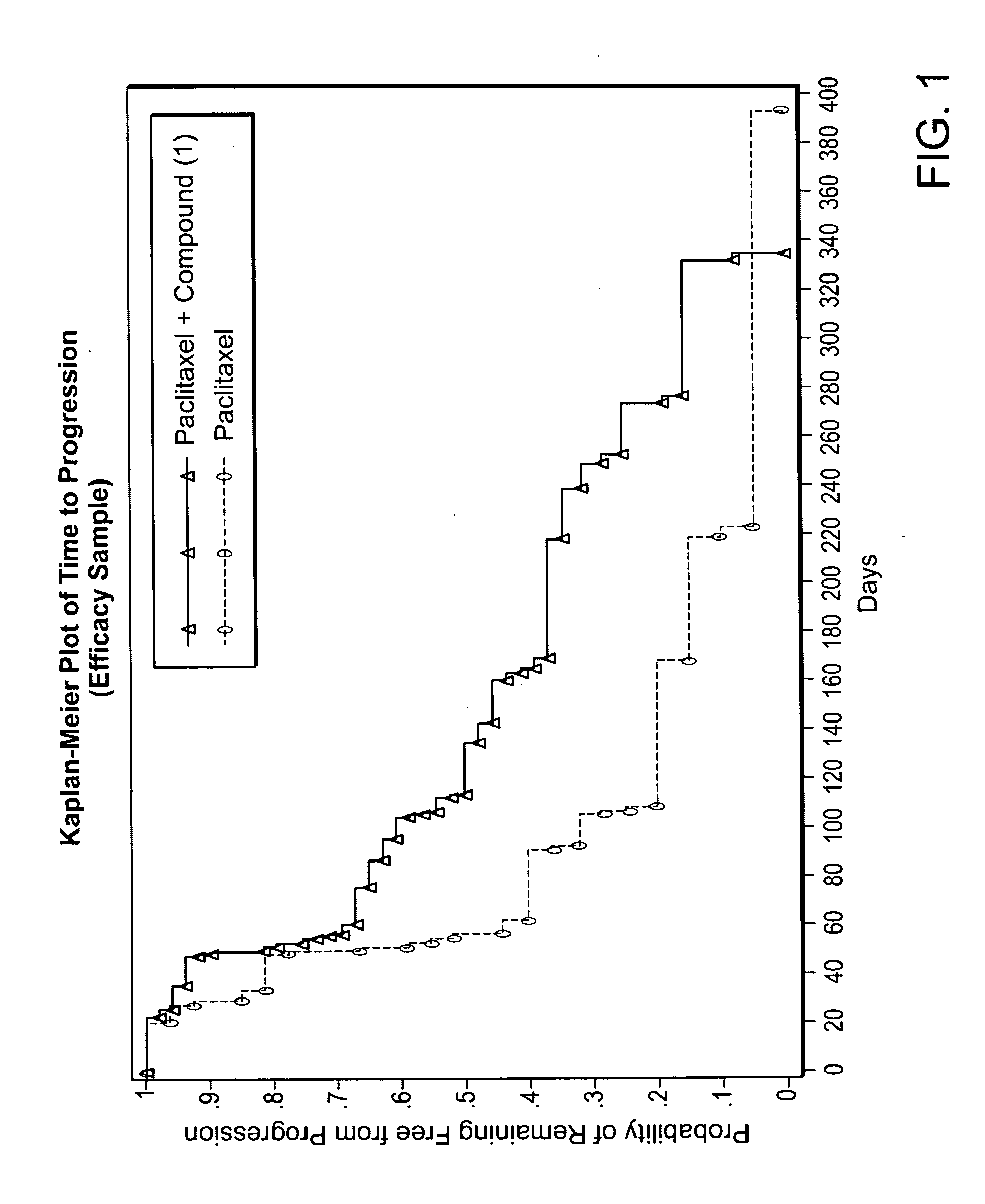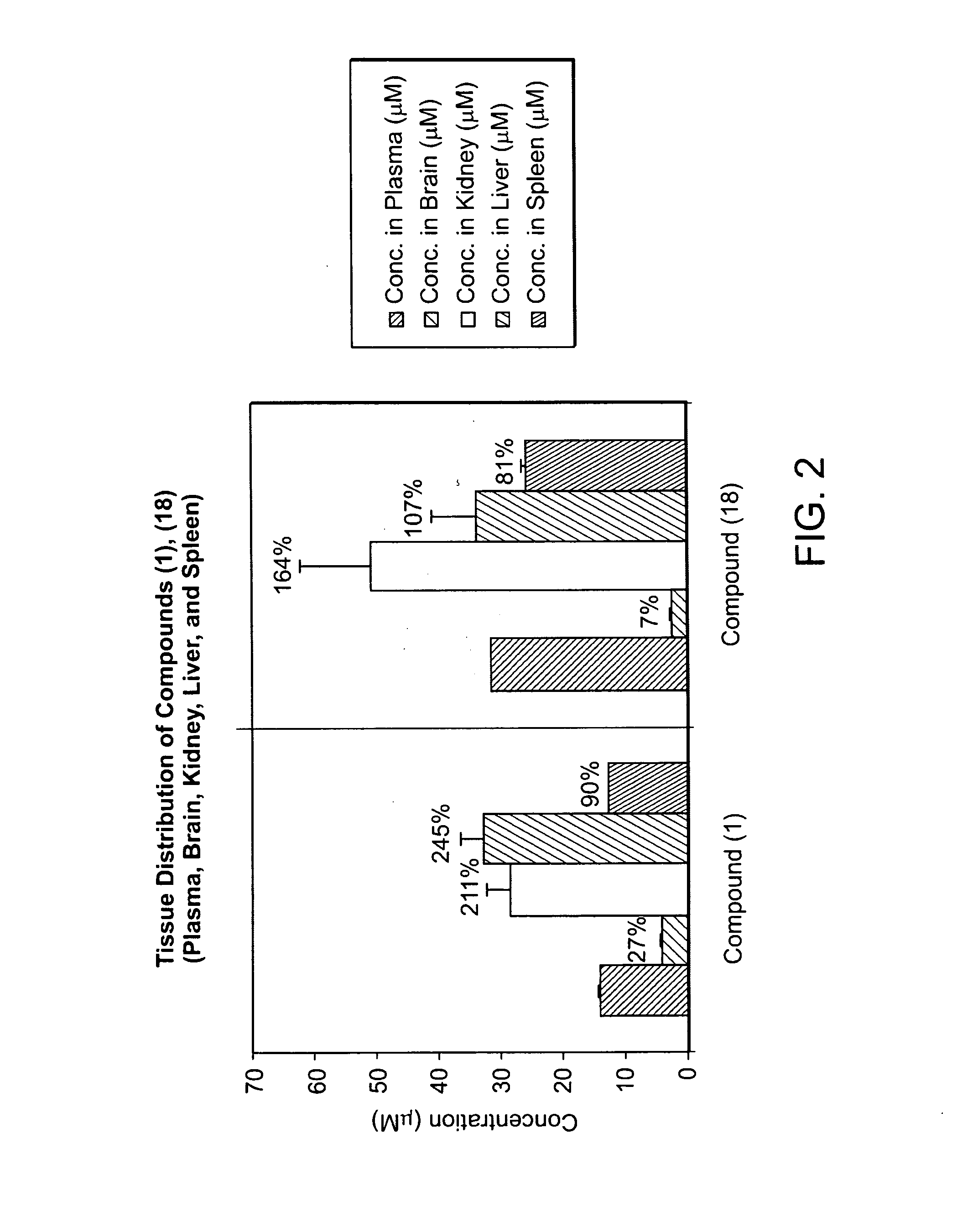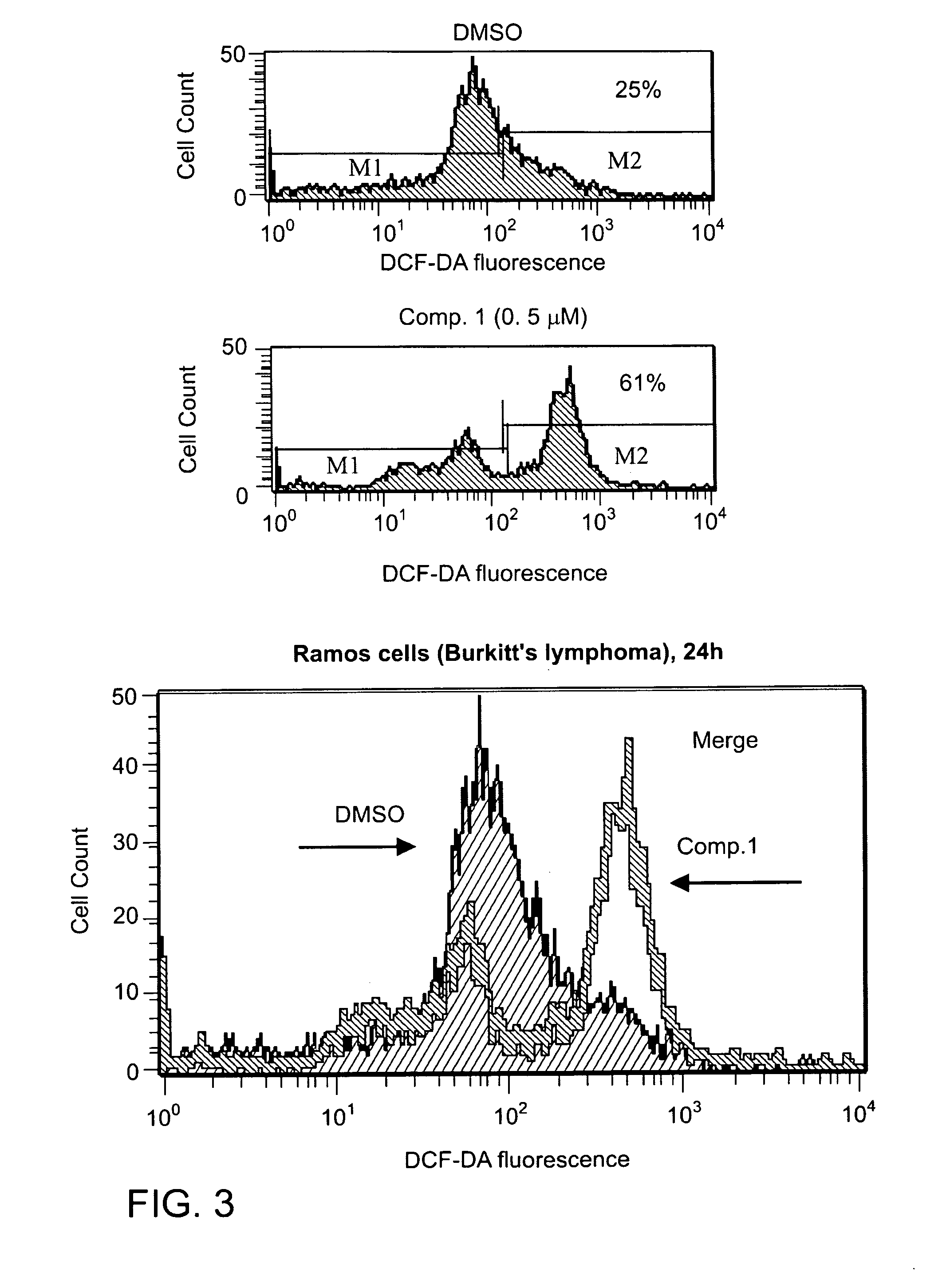Combination with Bis(thiohydrazide amides) for treating cancer
a technology of thiohydrazide and bis, which is applied in the direction of biocide, drug composition, peptide/protein ingredients, etc., can solve the problems of cancer cells that are cancer cells that are more resistant to radiation or chemotherapy, and cancer cells that are generally more susceptible to ros-induced apoptosis, etc., to enhance anti-proliferative and apoptotic activity, induce hsp70
- Summary
- Abstract
- Description
- Claims
- Application Information
AI Technical Summary
Benefits of technology
Problems solved by technology
Method used
Image
Examples
example 1
Weekly Treatment Regimen of Compound (I) and Paclitaxel Combined in Stage 1V Metastatic Melanoma Patients in Comparison with Paclitaxel Alone, Based on Time to Progression
[0361]A total of 81 people with Stage 1V melanoma were tested in a randomized trial with ratios of 2:1, compound (I)+paclitaxel (53 people): paclitaxel alone (28 people). The dosages administered were 213 mg / m2 compound (I), 80 mg / m2 paclitaxel, and the dosage regimen was 3 weekly doses per each 4 week cycle. Patients were treated until progression of the disease. Patients who progressed on paclitaxel alone were given the option to crossover to compound (I)+paclitaxel and were treated until progression. The tumor assessments were performed at baseline, Cycle 2, and every other Cycle thereafter.
[0362]The baseline grades of metastatic diseases of the patients are shown below:
compound (1) +PaclitaxelPaclitaxel(n = 53)(n = 28)M1a - metastasis to distant skin and7(13%)2(7%)subcutaneous tissueM1b - metastasis to lungs18(...
example 2
Compounds of the Invention Accumulate in the Kidneys
[0374]A study was designed to investigate the tissue distribution of compounds (1) and (18) in SW female mice, N=2 per group (total 4 groups including vehicle control. Reagents were obtained from Sigma, St Louis, Mo.; mice were obtained from Taconic Farms (Germantown N.Y.). The vehicle employed was 10% DMSO, 18% Cremophor RH40. The compounds were administered intravenously at a dose of 25 mg / kg. Blood was collected 30 min after administration, and tissue collection was performed immediately after blood collection. Plasma samples were prepared by combining 50 μL plasma+50 μL1% dithiothreitol (DTT)+150 μL CH3CN (0.1% HCOOH), centrifuged at 10,000 rpm×5 min; 150 μL supernatant+90 μL H2O. Tissue samples were prepared by homogenizing a weighed tissue sample in phosphor-buffered saline (PBS, ×1)+1% DTT (×1)+CH3CN (0.1% HCOOH) (×3)), centrifuged at 10,000 rpm×5 min; 150 μL supernatant+90 μL H2O. 100 μL prepared samples were subjected to H...
example 3
Direct Evidence that Compound 1 Induces the Generation of ROS in Drug-Treated Cells
[0376]We performed a series of experiments to directly show that Compound 1 induces the generation of ROS in drug-treated cells. In these experiments, we monitored the production of ROS using the cell permeable Carboxy-H2DCFDA probe. When this probe is oxidized by ROS, it emits a green fluorescence that can be detected using flow cytometry or fluorescent microscopy. Ramos cells were treated with Compound 1 (0.5 μM) for 24 hours or pre-treated with 1.0 mM or 10 mM NAC for 1 hour prior to addition of Compound 1 was then washed gently once with warm HBSS / Ca / Mg (GIBCO.14025). 25 μM carboxy-H2DCFDA (Invitrogen. C400) working solution was added to cover the cells, and the cells were incubated for 30 minutes at 37° C., protected from light. The cells were gently washed three times in warm HBSS / Ca / Mg. ROS levels, as determined by fluorescence intensity, were determined by flow cytometry (excitation at 495 nm,...
PUM
 Login to View More
Login to View More Abstract
Description
Claims
Application Information
 Login to View More
Login to View More - R&D
- Intellectual Property
- Life Sciences
- Materials
- Tech Scout
- Unparalleled Data Quality
- Higher Quality Content
- 60% Fewer Hallucinations
Browse by: Latest US Patents, China's latest patents, Technical Efficacy Thesaurus, Application Domain, Technology Topic, Popular Technical Reports.
© 2025 PatSnap. All rights reserved.Legal|Privacy policy|Modern Slavery Act Transparency Statement|Sitemap|About US| Contact US: help@patsnap.com



